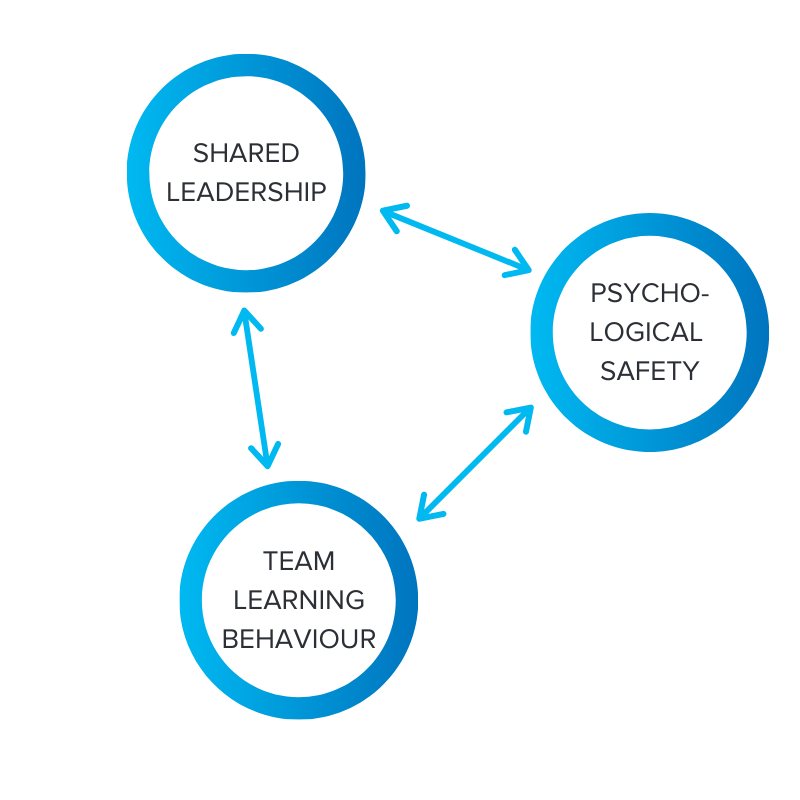THE SCIENCE BEHIND TEAMSCAN
TeamScan comprises three factors that all have a significant role in helping teams successfully reach their goals: Psychological Safety, Team Learning Behaviour and Shared Leadership.
Although these three factors are separate, they strongly influence and reinforce each other. For example, a team demonstrating high psychological safety will feel more comfortable learning together and sharing leadership in the team. In other words, teams presenting a high level of one of these three variables will likely present high levels of the other two variables and vice versa.


PSYCHOLOGICAL SAFETY
Psychological safety is broadly defined as a belief in which people are comfortable expressing and being themselves. Teams presenting a high level of psychological safety feel comfortable sharing concerns and mistakes without fear of embarrassment or retribution. Extensive research has demonstrated that psychological safety predicts quality improvements, learning behaviour, and productivity.
TEAM LEARNING BEHAVIOUR
Team learning behaviour is an ongoing process of reflection and action, characterised by asking questions, seeking feedback, experimenting, reflecting on results, and discussing errors or unexpected outcomes of action. In essence, it refers to the change in the team’s collective knowledge and skill produced by the shared experience of the team members. Teams demonstrating a high level of team learning behaviour improve or develop new techniques, approaches, products, and knowledge of a high quality in a short time.


TEAM LEARNING BEHAVIOUR
Team learning behaviour is an ongoing process of reflection and action, characterised by asking questions, seeking feedback, experimenting, reflecting on results, and discussing errors or unexpected outcomes of action. In essence, it refers to the change in the team’s collective knowledge and skill produced by the shared experience of the team members. Teams demonstrating a high level of team learning behaviour improve or develop new techniques, approaches, products, and knowledge of a high quality in a short time.

SHARED LEADERSHIP
Shared Leadership is a team phenomenon whereby leadership roles and influence are distributed among team members. This leadership style shifts the focus from the leader to the group and it is characterised by a process in which team members can exhibit upward or downward influence on each other. Teams exhibiting a high level of this variable bring more resources to the task, share more information, and experience higher commitment with the team.

SHARED LEADERSHIP
Shared Leadership is a team phenomenon whereby leadership roles and influence are distributed among team members. This leadership style shifts the focus from the leader to the group and it is characterised by a process in which team members can exhibit upward or downward influence on each other. Teams exhibiting a high level of this variable bring more resources to the task, share more information, and experience higher commitment with the team.
